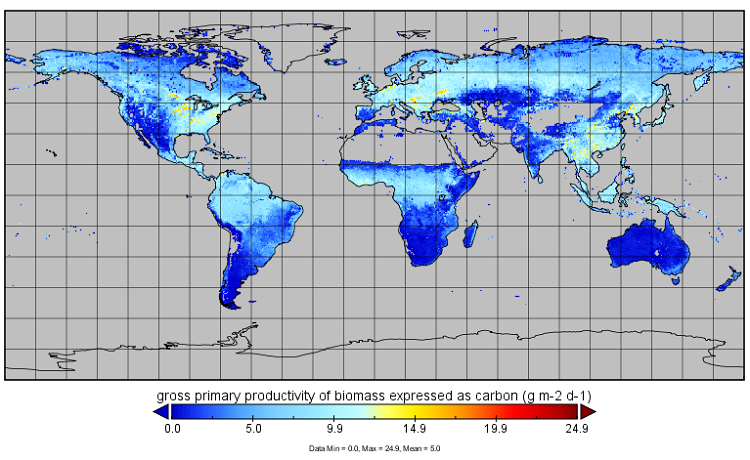The ORNL DAAC recently released the second version of the dataset on Daily Gross Primary Production of vegetation by Joiner, J. et al, 2021:
Global MODIS and FLUXNET-derived Daily Gross Primary Production, V2
This dataset provides global gridded daily estimates of terrestrial gross primary production (GPP) and uncertainties at 0.05-degree resolution for the period 2000-03-01 to the recent past. The GPP was derived from the MODerate-resolution Imaging Spectroradiometer (MODIS) instruments on the NASA Terra and Aqua satellites using the Nadir Bidirectional Reflectance Distribution Function (BRDF)-Adjusted Reflectances (NBAR) product as input to neural networks that were used to globally upscale GPP estimated from selected FLUXNET 2015 eddy covariance tower sites. This GPP product is referred to as FluxSat v2.0, where FluxSat refers to data derived using FLUXNET eddy covariance tower site data and the coincident satellite data. These data have applications in global carbon cycle and agricultural modeling.
Additional ORNL DAAC data holdings on aspects of vegetation, forest structure and cover, and biogeochemistry can be found at the Vegetation and Forests Science Theme Lister.
Citation: Joiner, J., and Y. Yoshida. 2021. Global MODIS and FLUXNET-derived Daily Gross Primary Production, V2. ORNL DAAC, Oak Ridge, Tennessee, USA. https://doi.org/10.3334/ORNLDAAC/1835

